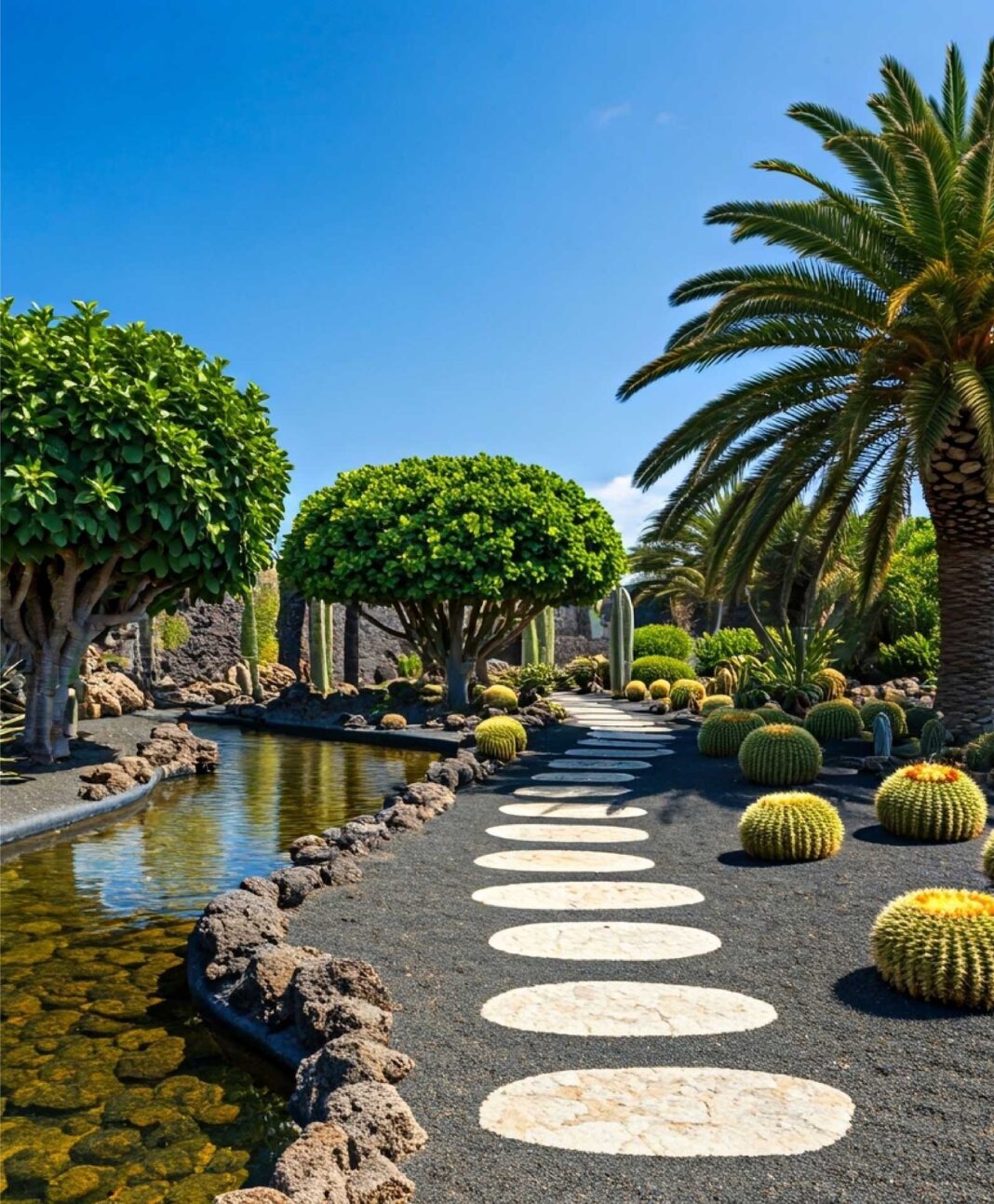Japanese Zen gardens are minimalist, conceptual spaces designed to be enjoyed in and for their silence, inviting mindful meditation, while requiring very little upkeep
Known as a karesansui, or ‘dry garden’, the Japanese Zen garden is one of the most symbolic and profound styles of landscape design. It is a study in controlled emptiness, featuring open spaces and just a few plants. What matters most is what is not there. Rather than seeking traditional beauty, it evokes an inner landscape, a place for reflection, serenity and quiet contemplation. It is fully scalable, allowing you to create a miniature Zen garden even in your own home.
The concept, minimalism and signature elements of a Zen garden lend themselves to any environment, including the volcanic landscape of Lanzarote. Japanese spirituality aligns perfectly with the poetry of our island setting, where lava, black rock and mineral silence echo the aesthetics of emptiness, timelessness, and essential simplicity.
Each element of a Zen garden carries a traditional, conceptual or philosophical meaning. In Lanzarote, these can be mapped to island equivalents and adapted in various ways. White or light-coloured sand or gravel is the predominant surface element in a Zen garden, symbolising water and the mental clarity needed for meditation. On the island, we would use fine picón or light-coloured sand to create contrast.
Large stones represent mountains or islands and, symbolically, life’s obstacles. Here, we could use naturally shaped volcanic rocks. Moss symbolises time, permanence, and serenity. Locally, this could be substituted (sparingly) with native lichens or succulent plants such as Aeonium. As a rule, vegetation should be sparse, deliberate, and limited in variety, chosen for their symbolic value. Local equivalents might include Tabaiba, Cardón (Canary Island spurge), Bejeque (another type of Aeonium), Euphorbia balsamifera, or Canary Island lavender.
A bridge or step signifies a spiritual transition. This could be built with slabs of cut lava or flat flagstones – the onus is on simplicity. Finally, raking the sand symbolises the movement of water and thought. This is the only maintenance a Zen garden requires and it can be done in straight lines, circular patterns or a combination of the two. The idea is to let yourself go, subconsciously transferring your feelings and emotions into the ground.



